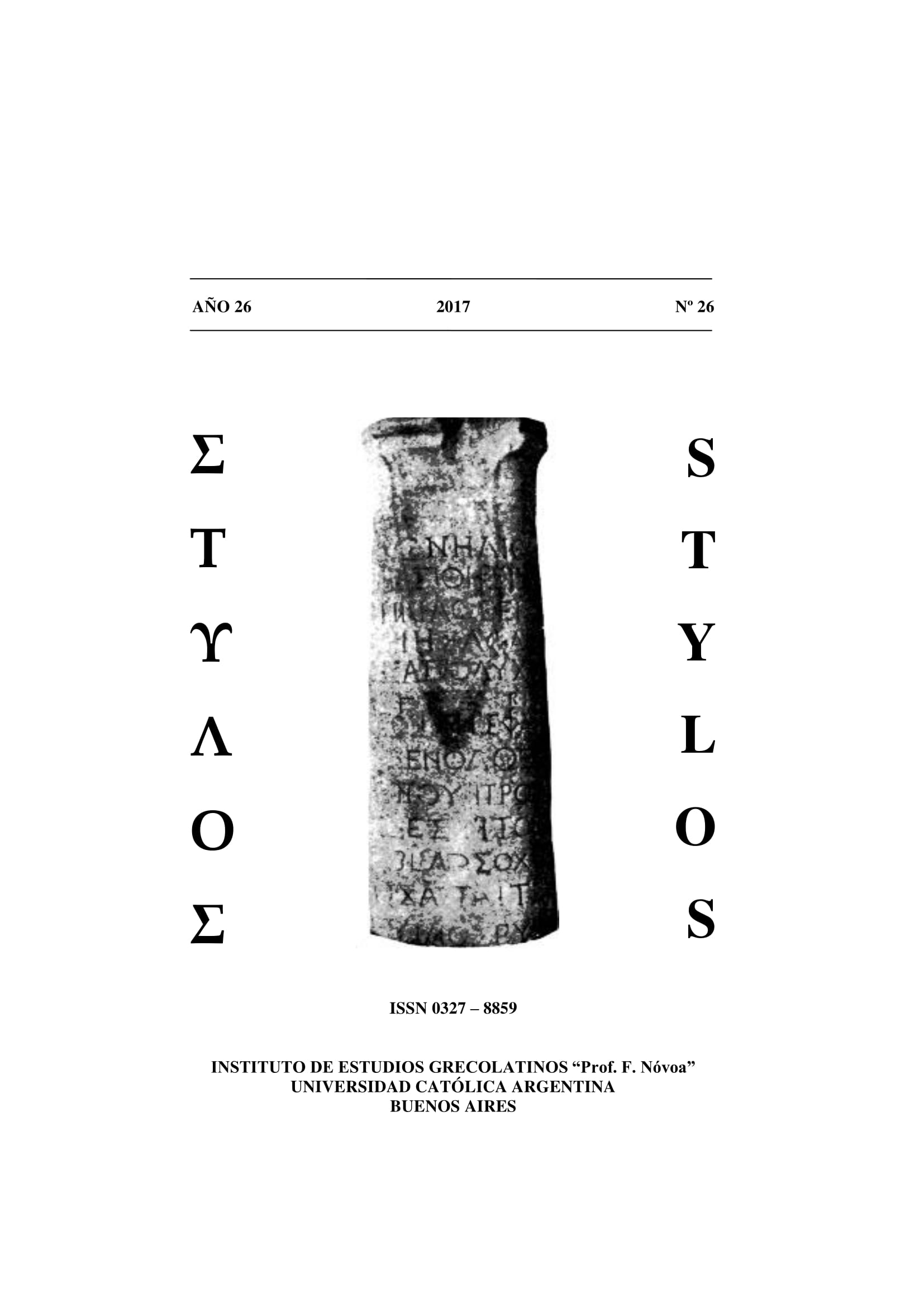POLIBIO Y LA DIGRESIÓN SOBRE LA MIGRACIÓN GALA EN EL LIBRO V DE TITO LIVIO
Keywords:
Livy – Polybius – Gauls – avaritiaAbstract
Livy narrates the migration of the Gauls to Italy in an excursus of the book 5. Among some particularities we can find in the account, one phrase (“…in imperio eius -of Ambigatus- Gallia adeo frugum hominumque fertilis fuit ut abudans multitudo vix regi videretur posse.” 5.34.2) specifically caught the attention of the researchers, who until now could not explain satisfactorily its meaning. The aim of this paper is to suggest an explanation of that phrase using some information that we can find in Polybius’ oeuvre, an author that has not yet been considered between the possible sources of Livy’s digression. Then, in a second part, we study the episode of the capture of Rome by the Gauls with the objective of showing how our suggestion can be linked with elements that figure there.Downloads
References
BRISCOE, J. (2008), A Commentary on Livy. Books 38-40. Oxford University Press. Oxford.
CORNELL, T. J. (1999 (1995)), Los orígenes de Roma c. 1000-264 a. C. Italia y Roma de la Edad del Bronce a las guerras púnicas. Ed. Crítica. Barcelona.
DESNIER, J.-L. (1991), “Le Gaulois dans l’imaginaire monétaire de la République ro¬maine”, MEFRA 103.2. Pp. 605-654.
FELDHERR, A. (1998), Spectacle and Society in Livy’s History. Universi-ty of Califor¬nia Press. Berkeley-Los Angeles.
FORSYTHE, G. (1999), Livy and early Rome. A study in historical method and judg¬ment. Franz Steiner Verlag. Stuttgart.
KRAUS, C. S. (1994), “‘No second Troy’: Topoi and refoundation in Livy, Book V”, TAPhA 124. Pp. 267-289.
KREMER, B. (1994), Das Bild der Kelten bis in augusteische Zeit: Studien zur Instrumentalisierung eines antiken Feinbildes bei griechischen und römischen Autoren. Franz Steiner Verlag. Stuttgart.
LSJ = Liddell, H. G., Scott, R., Jones, H. S. (1996), A Greek-English Lexicon, Clarendon Press. Oxford.
LUCE, T. J. (1977), Livy. The Composition of His History. Princeton University Press. Princeton.
MAHE-SIMON, M. (2003), “L’Italie chez Tite-Live: l’ambiguïté d’un con-cept”, RPh 2003/2.LXXVII. Pp. 235-38.
MARCO SIMÓN, F. (2012), “Iconografía de la derrota: formas de representación del bárbaro occidental en época tardorrepublicana y altoimperial”, en F. Marco Simón, F. Pina Polo y J. Remesal Rodríguez (eds.), Vae Victis! Perdedores en el mundo antiguo. Publicacions i Edicions. Universitat de Barcelona. Pp. 177-195.
MAUERSBERGER, A. et al. (2006), Polybios-Lexikon, Band 1, Lieferng 4. Akademie Verlag. Berlin.
MILES, G. B. (1997 (1995)), Livy. Reconstructing Early Rome. Cornell University Press. Ithaca/London.
MILES, G. B. (1986), “The Cycle of Roman History in Livy’s First Pen-tad”, AJPH 107. Pp. 1-33.
MINEO, B. (2006), Tite-Live et l’histoire de Rome. Klincksieck. Sofía.
MITCHELL, S. (2001 (1993)), Anatolia: Land, Men, and Gods in Asia Mi-nor. Vol. I: The Celts and the Impact of Roman Rule. Clarendon Press. Oxford.
MORENO LEONI, A. M. (2017), Entre Roma y el mundo griego. Memoria, autorrepresentación y didáctica del poder en las Historias de Polibio. Ordia Prima. Studia 8. Editorial Brujas. Córdoba.
OAKLEY, S. P. (1998), “Review of G. B. Miles, Livy: Reconstructing Early Rome”, CPh 93.3. Pp. 279-286.
OAKLEY, S. P. (2007 (2005)), A commentary on Livy. Books VI-X. Vol-ume IV: Book X. Clarendon Press. Oxford.
OGILVIE, R. M. (1970 (1965)), A Commentary on Livy. Books 1-5. Clarendon Press. Oxford.
PEYRE, CH. (1970) “Tite-Live et la ferocité gauloise”, REL 48. Pp. 277-296.
PHILLIPS J. E. (1982), “Current Research in Livy’s First Decade: 1959-1979”. ANRW, II.30.2. Pp. 998-1057.
WILLIAMS, J. H. C. (2001), Beyond the Rubicon. Romans and Gauls in Republican Italy. Oxford University Press. Oxford.
WALBANK, F. W. (1957), A historical commentary on Polybius. Vol. I: Commentary on Books I-VI. Clarendon Press. Oxford.
Downloads
Published
How to Cite
Issue
Section
License






